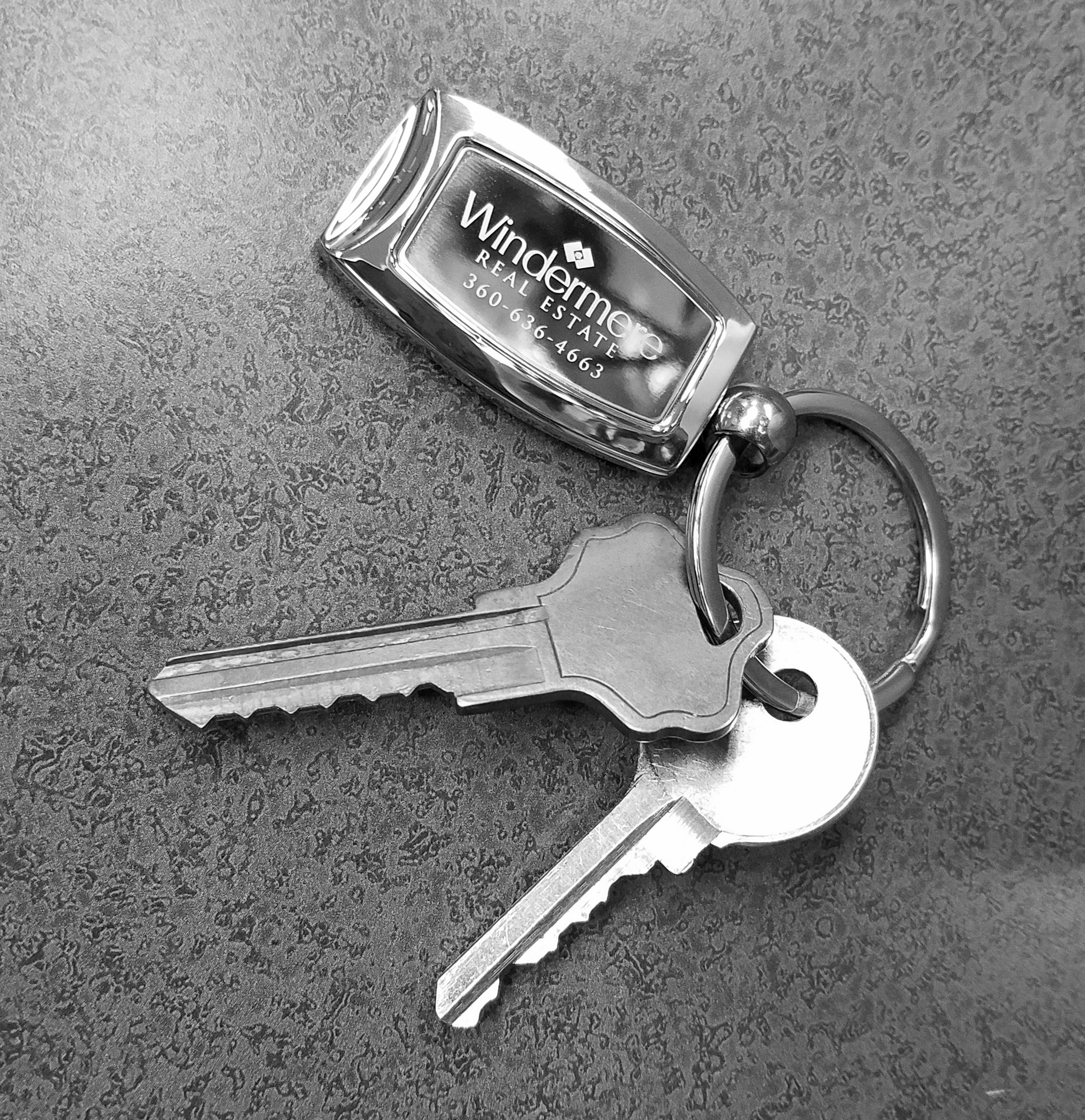A home is the largest investment most people will make in their lifetime, so when it comes time to sell, homeowners often wonder what they can do to get the most return on their investment. Many have the misconception that remodeling is the way to go, but that isn’t always the case. Rather than going all-in on upgrading your home, you should know which home improvements are worth it, and which ones aren’t.
We’ve sifted through the research and come up with a quick list of five home improvements that’ll help buyers fall in love with your home when it comes time to sell.
Curb appeal is critical. As the name suggests, it’s the first thing buyers see when pulling up to the front of any home so it needs to be in nearly pristine condition. Start with the garage door for the most immediate return. According to Remodeling Magazine’s 2018 Cost vs. Value report and Money.com, the cost of updating your worn builder-grade garage door with an upscale steel model is about $3,470, and it’ll boost your home’s value by 98.3 percent of the installation price, which means you’ll lose about $60 when it’s all said and done.
Landscaping can also go along way for a minimal upfront investment. Six rounds of fertilizer and weed control will set you back about $330, but when it comes time to sell, you’ll see an ROI of about $1,000 according to a survey by the National Association of Realtors.
Other improvements you can easily make to your curb appeal include:
- Pressure wash the exterior
- Liven up your front door with a fresh coat of paint
- Replace hardware such as doorknobs and knockers
- Install updated house numbers
- Make your walkways pop with new greenery or flowers
- Plant a succulent garden
- Update your porch lights
- Add a little charm with window flower boxes
- Stage your porch
2. Install hardwood floors
Installing or upgrading hardwood floors is pretty failsafe as most buyers love it. Ninety-nine percent of real estate agents agree that homes with hardwood floors are easier to sell, and 90 percent of agents say that they sell for a higher sale price, according to the National Wood Flooring Association. Similarly, research from the National Association of Realtors shows that 54 percent of homebuyers are willing to shell out extra cash for homes with hardwood.
As for your return on investment, NAR’s 2017 Remodeling Impact Report projects that homes that already have hardwood floors will likely see 100 percent return. On the flip side, installing hardwood flooring pays off almost as well with a 91 percent return on investment. It can cost about $5,500 to install, and it’s projected to add about $5,000 to the home value. These estimates may vary depending on the type of flooring you install.
3. Upgrade your kitchen
According to the National Association of Realtors, real estate agents believe that complete kitchen renovations, kitchen upgrades, and bathroom renovations will add the most resale value to a home (in that order). However, complete kitchen renovations can be costly and unnecessary. In fact, kitchen remodels have some of the worst return on investment stats. Remodeling Magazine’s 2017 Cost Vs. Value report found that a mid-range kitchen remodel cost exceeds its resale value by more than $21,000, and that number more than doubles in an upscale remodel. Rather than spend a ton of cash and weeks (or months) on renovating, put a little elbow grease and a small budget into it.
Instead of doing a full renovation, focus on these smaller updates:
- Clean
- Organize your pantry
- Use a little Murphy Oil Soap and hot water on all of your cabinets
- Polish cabinets with Howard Feed-In-Wax
- Tighten all hinges
- Clean grout and tiles
- Shine your sinks and hardware until you can see your face in it
- Deep clean your stove
- Give your kitchen a fresh coat of neutral paint
- Update lighting fixtures, and replace light bulbs
- Spring for a new cabinet and door hardware
- Make your countertops look new
- Upgrade your appliances
4. Go green
Today’s younger generations are embracing eco-friendly living, and millennials are leading the pack. According to the National Association of Realtors’ 2018 Home Buyer and Seller Generational Trends Report, millennials make up the largest segment of buyers, holding strong at 34 percent of all buyers.
When it comes to attracting buyers who are willing to pay top dollar, going green makes sense. A Nielson study found that, of more than 30,000 millennials surveyed,66 percent are willing to shell out more cash for conservation-conscious, sustainable products. Depending on where you live, consider installing solar panels, wind turbines, and eco-friendly water systems.
No matter where you live, attic insulation replacement and weather stripping are safe bets. Attic insulation replacement was a top home improvement upgrade last year, and homeowners saw a 107.7 percent return on the investment. Weather stripping, a fairly inexpensive DIY project, costs, on average, about $168 nationally.
5. Create a summer retreat
Homes with pools can fetch a higher selling price if done properly. There are in-ground pools and above-ground pools. To truly add value, you’d want to go with an in-ground pool. It’s a permanent investment that costs more upfront, but above-ground pools don’t really add anything to a home other than a nice personal oasis from hot weather.
Pools cost about $1,000 on average to maintain between the seasonal openings and closings, necessary upkeep and utility bills, according to Houselogic.com and financial consultant Dave Ramsey’s website. Some buyers might not be up for that cost. However, pools can help sell a home especially when you live in a higher-end neighborhood where everyone has pools and in warmer climates like Florida, Arizona or Hawaii.
Ramsey wrote that a well-marketed in-ground pool can boost a home’s value as much as 7 percent, but he stresses the importance of making sure the style of the pool matches the house and surrounding property. Be sure that any pool doesn’t completely consume the outdoor space. Pools that make sense locationally and complement the property are the best. If the pool is just an expensive eyesore, it’s probably better to remove it.
With these upgrades, your home will surely see a higher price tag when you go to sell because, as the numbers show, buyers swoon for an outdoor retreat, a like-new kitchen, classic hardwood flooring, and green upgrades.
Our guest author is Sarah Stilo, the Content Marketing Coordinator for HomeLight, which helps pair homebuyers with agents. They can be found at HomeLight.Com.

 Facebook
Facebook
 Twitter
Twitter
 Pinterest
Pinterest
 Copy Link
Copy Link



